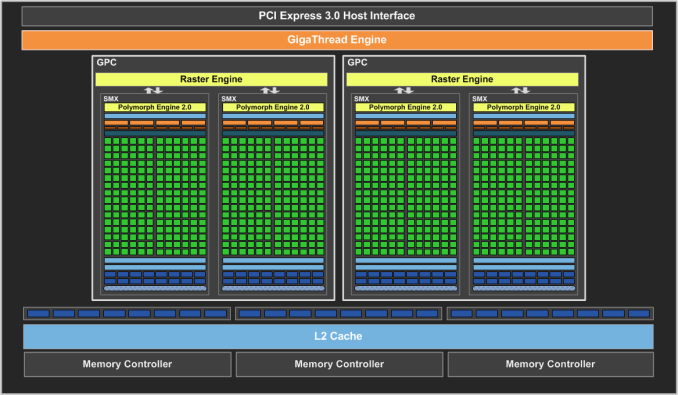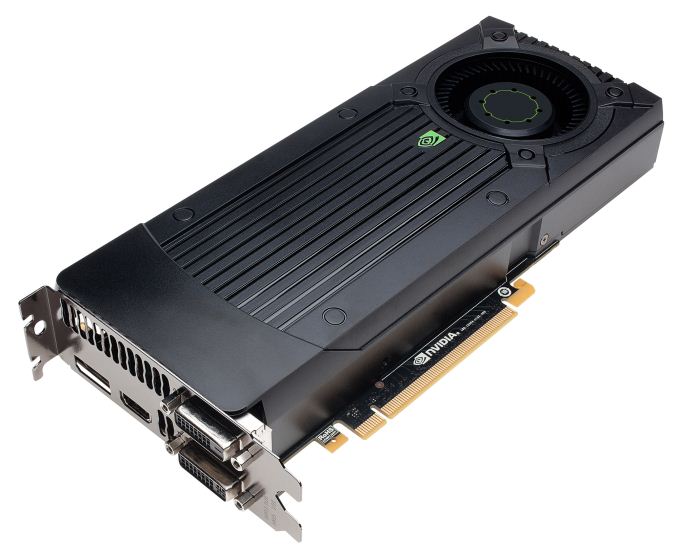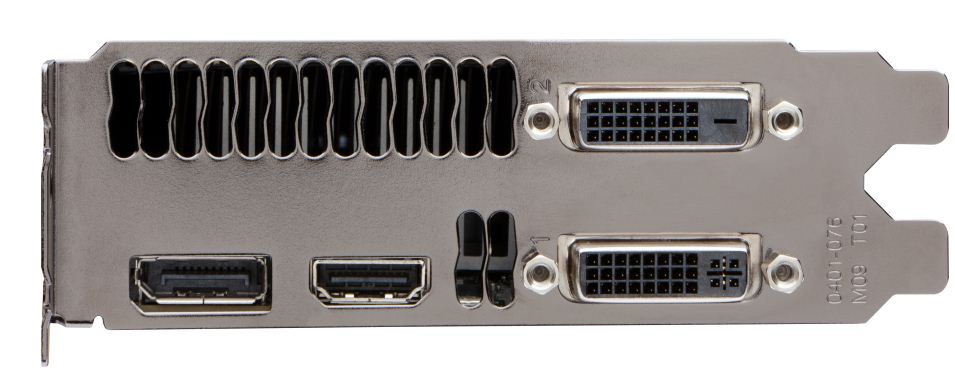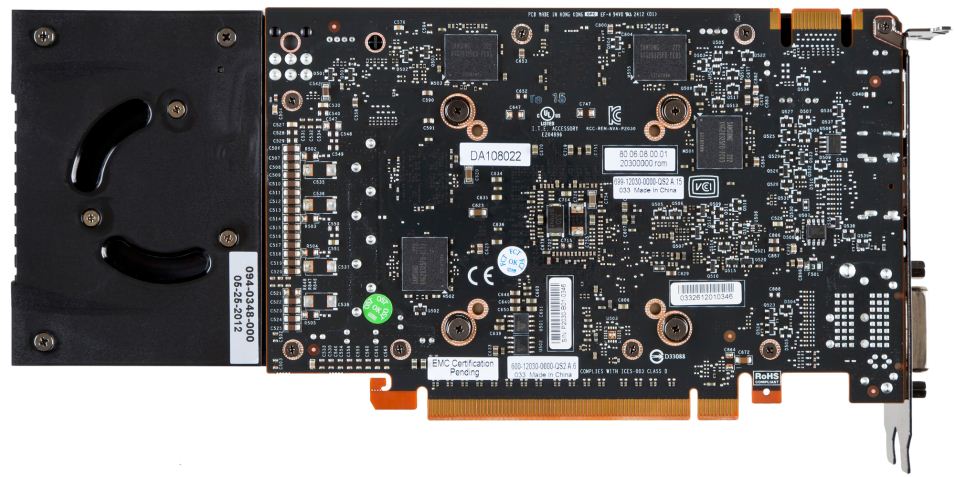kamicasu
Power Member

To get our weekly geekiness quota out of the way early, the desktop video card industry is a lot like The Force. There are two sides constantly at odds with each other for dominance of the galaxy/market, and balance between the two sides is considered one of the central tenants of the system. Furthermore when the system isn’t in balance something bad happens, whether it’s galactic domination or uncompetitive video card prices and designs.
To that end – and to bring things back to a technical discussion – while AMD and NVIDIA’s ultimate goals are to rule the video card market, in practice they serve to keep each other in check and keep the market as a whole balanced. This is accomplished by their doing what they can to offer similarly competitive video cards at most price points, particularly the sub-$300 market where the bulk of all video card sales take place. On the other hand when that balance is disrupted by the introduction of a new GPU and/or new video card, AMD and NVIDIA will try to roll out new products to restore that balance.
This brings us to the subject of today’s launch. Friday saw the launch of AMD’s Radeon HD 7790, a $149 entry-level 1080p card based on their new Bonaire GPU. AMD had for roughly the last half-year been operating with a significant price and performance gap between their 7770 and 7850 products, leaving the mid-$100 market open to NVIDIA’s GTX 650 Ti. With the 7790 AMD finally has a GTX 650 Ti competitor and more, and left unchallenged this would mean AMD would control the market between $150 and $200.
NVIDIA for their part has no interest in letting AMD take that piece of the market without a fight, and as such will be immediately countering with a new video card: the GTX 650 Ti Boost. Launching today, the GTX 650 Ti Boost is based on the same GK106 GPU as the GTX 650 Ti and GTX 660, and is essentially a filler card to bridge the gap between them. By adding GPU boost back into the mix and using a slightly more powerful core configuration, NVIDIA intends to plug their own performance gap and at the same time counter AMD’s 7850 and 7790 before the latter even reaches retail. It’s never quite that simple of course, but as we’ll see the GTX 650 Ti Boost does indeed bring some balance back to the Force.

When NVIDIA produced the original GTX 650 Ti, they cut down their GK106 GPU by a fairly large degree to reach the performance and power levels we see with that card. From 5 SMXes and 3 ROP/Memory partitions, GK106 was cut down to 4 SMXes and 2 ROP partitions, along with having GPU boost removed and overall clockspeeds lowered. In practice this left a pretty big gap between the GTX 650 Ti and the GTX 660, one which AMD’s 7850 and now their 7790 serve to fill.
Despite the name GTX 650 Ti Boost, it’s probably more meaningful to call NVIDIA’s new card the GTX 660 light. The GTX 650 Ti Boost restores many of the cuts NVIDIA made for the GTX 650 Ti; this latest 650 has the core clockspeed, memory clockspeed, GPU boost functionality, and ROP partitions of the GTX 660. In fact the only thing differentiating the GTX 660 from the GTX 650 Ti Boost is a single SMX; the GTX 650 Ti Boost is still a 4 SMX part, and this is what makes it a 650 in NVIDIA’s product stack (note that this means GTX 650 Ti Boost parts will similarly have either 2 or 3 GPCs depending on which SMX is cut). Because clockspeeds are identical to the GTX 660, the GTX 650 Ti Boost will be shipping at 980MHz for the base clock, 1033MHz for the boost clock, and 6GHz for the memory clock.

The result of this configuration is that the GTX 650 Ti Boost is much more powerful than the name would let on, and in practice is closer to the GTX 660 in performance than it is the GTX 650 Ti. Compared to the GTX 650 Ti, the GTX 650 TI Boost has just 106% of the shading/texturing/geometry throughput, but due in large part to the return of the 3rd ROP partition, ROP throughput has been boosted to 159%. Meanwhile thanks to the combination of higher memory clocks and the full 192bit memory bus, memory bandwidth has been increased to 166% of the GTX 650 Ti’s. Or compared to a GTX 660, the GTX 650 Ti Boost has 100% the ROP throughput, 100% the memory bandwidth, and 80% of the shading/texturing/geometry performance. The end result being that in memory/ROP bound scenarios performance will trend close to the GTX 660, while in shader/texture/geometry bound situations performance will easily exceed the GTX 650 Ti’s performance by 6-16%, depending on where GPU boost settles at.
Of course GTX 660-like performance does come with some tradeoffs. While the GTX 650 Ti was a 110W TDP part, the GTX 650 Ti Boost will be a 134W part, just shy of the 140W GTX 660. The GTX 650 Ti Boost runs at the same clockspeeds and the same voltages with the same amount of RAM as the GTX 660, meaning the power savings are limited to whatever power is saved from fusing off that SMX, which in practice will not be all that much. Even by NVIDIA's own reckoning they're minimal. So what we’re effectively looking at is a somewhat slower GTX 660 operating at near-GTX 660 power levels.
Driving home the point that the GTX 650 Ti Boost is a reconfigured GTX 660, with the TDP being held at 140W NVIDIA and their partners will be recycling their GTX 660 designs for NVIDIA’s new card. Our reference card is identical to our GTX 660 reference card, and the same can be said for many partner designs. Partners need to provide the same power and cooling to the GTX 650 Ti Boost as they do the GTX 660, so there’s little point in rolling new designs and in fact this helps NVIDIA and their partners get the GTX 650 Ti Boost to market sooner.




A placa GeForce GTX 650 Ti Boost terá 768 núcleos CUDA rodando a 980 MHz, além de 2 GB de memória GDDR5 com frequência de 6.008 GHz. Já no modo Boost, a GPU atinge 1.033 MHz e versões com overclock ainda a serem lançadas podem até mesmo ultrapassar a marca de 1,1 GHz.
Última edição:

_575px.jpg)

